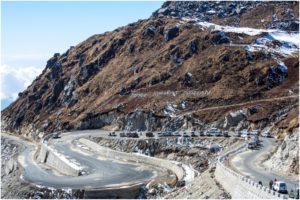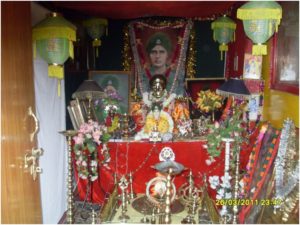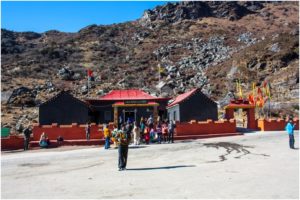
Situated in the East Sikkim district an offshoot of the historic Silk Route is Nathula at a height of 4,310m above mean sea level. Other than presenting a picturesque view and housing the rare and endangered species of orchids and rhododendrons, it plays a crucial role as a strategically important location for the Indian Army. It serves as one of the five officially agreed Border Personnel Meeting points between the Indian Army and the People’s Liberation Army of China for regular consultations and interactions between the two armies to improve relations making it a focal point for the soldiers.

This area has seen many casualties and has buried many stories under its snow but one of them that still prevail is that of Baba Harbhajan Singh. Born on 30th August 1946 in the village of Sadrana in Punjab, Harbhajan Singh serves as a Major in the Indo-Sino border even after his death in 1968, or so the legend goes. He was in 18 Rajput Regiment in Nathula and fought in the Indo-Pak of 1967 before he slipped to his death and drowned in a glacier while leading a column of mules carrying supplies from Tuku La to Dongchui La, a remote outpost. He was only 22 years old. It is said that Baba led the regiment himself to his washed-up body after three days and soon he appeared in one of his colleague’s dream instructing him to make a memorial in his memory which was made by his regiment. Eventually, the memorial expanded into a shrine attracting both military and civil devotees inculcating a religious sense where Harbhajan Singh is believed to be a saint and earned the title of ‘baba’.

After his death, the soldiers believe that Baba still guards the border and informs the Indian Army three days prior to any impending danger. His presence is felt in his office and at his post alike. Even after death he has been being promoted in ranks and was the Honorary Captain at the time of his retirement and got a salary from the contributions of the soldiers posted there. Every year on 14 September a berth is reserved from New Jalpaiguri in West Bengal to Kuka in Punjab carrying a photo of Baba with his belongings being assisted by soldiers to his family for his holiday where his family greets him with fanfare. Not only the Indian Army but even Chinese pay him a tribute by setting up his chairs in every flag meeting. On 26th January 1969, he won the Maha Vir Chakra Award posthumously.

The shrine, now known as “Baba ji ka Mandir”, is a tourist attraction with many civil and military devotees flocking there to pay homage to the Hero of Nathula. Consisting of three rooms it houses Baba’s office, living room and the storeroom. His living room still has all his belongings kept under maintenance for him to be able to perform his duty. His uniform is on display and is said to never get dirty as he himself cleans it regularly. The water at the shrine is believed to have healing powers and so people leave sealed water bottles with inscribed names of ailing people. Units of the Indian Army that are posted in the region, seek Baba’s blessing with various plates dedicated to him lining the shrine’s walls.
This is one of a kind shrine attributed to the sheer superstitions and idolization. It can easily be dismissed as an urban legend. But to the three thousand something soldiers living in the adverse conditions performing their duty, it is a source of strength and reassurance. And as the saying goes, “Born to fight, trained to Kill, prepared to die but never will.”

